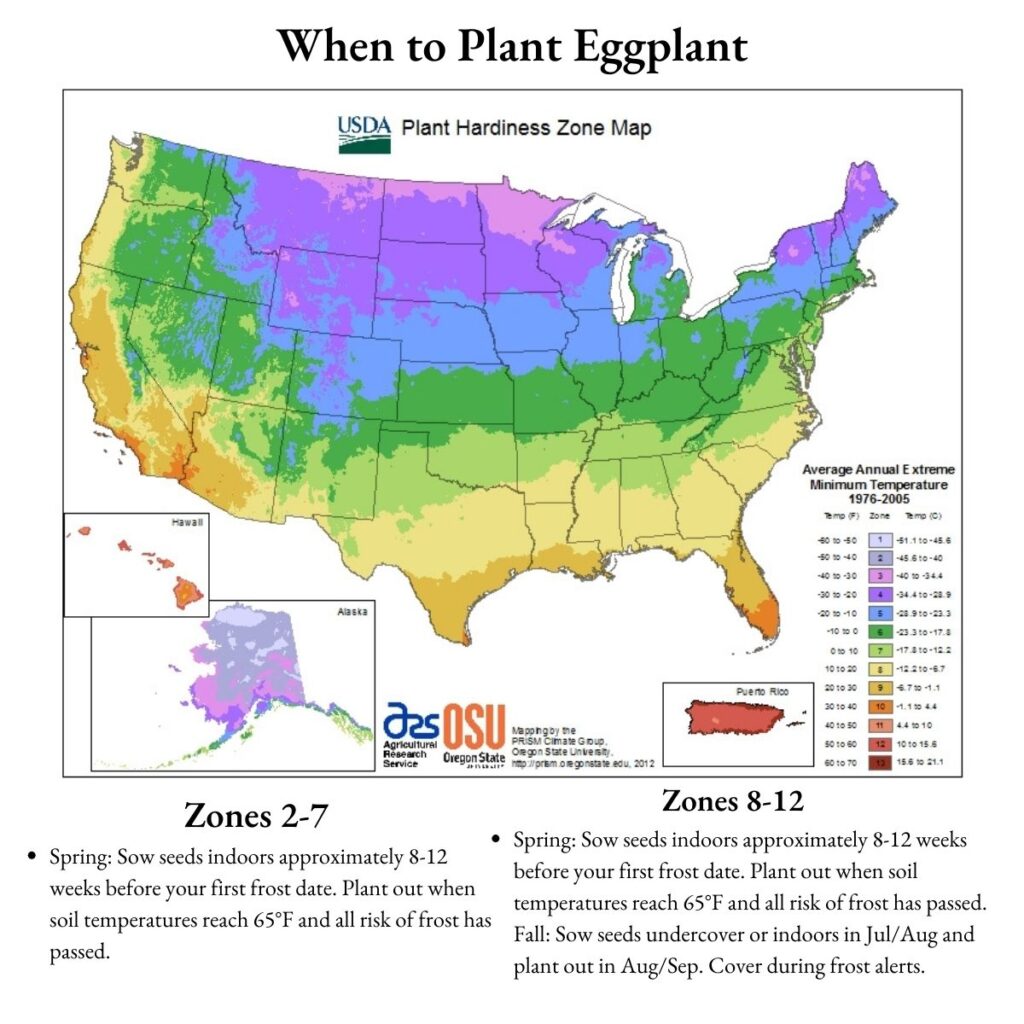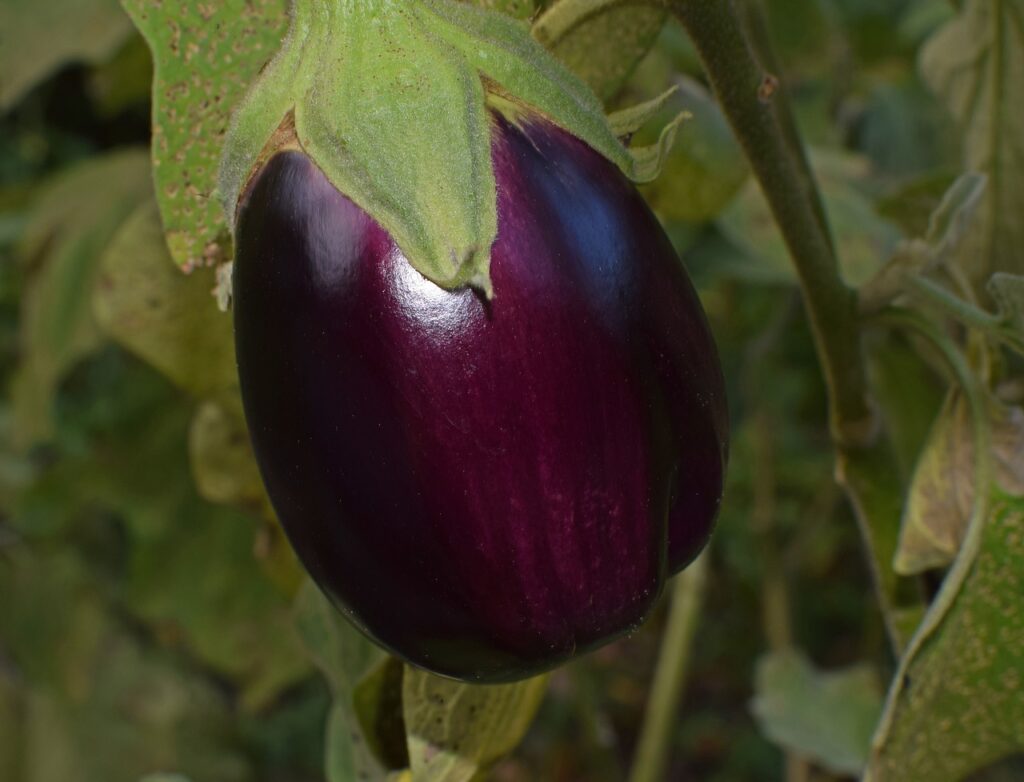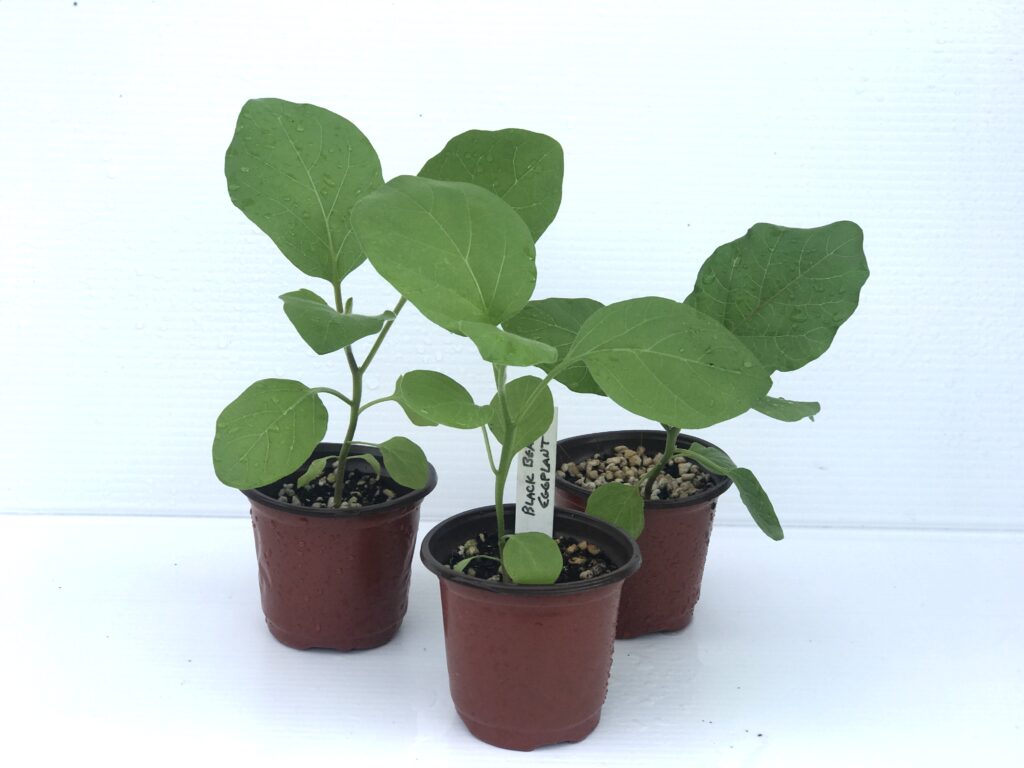Black Beauty Eggplant, known for its deep purple-black fruit and rich flavor, is a delightful addition to any vegetable garden. We’ll walk you through the entire process of growing black beauty eggplant from seed.
Black Beauty Eggplant, Solanum melongena, is a member of the Solanaceae or Nightshade family. It will grow in Zones 2 to 12.
In cooler zones, you’ll need to start it indoors well enough in advance to provide a long enough growing season to produce plenty of fruit.

Step-by-Step Guide for Growing Black Beauty Eggplant from Seed
Start eggplant seeds indoors at least 8-10 weeks before planting out.
Begin by selecting a high-quality seed starting mix, which provides the right balance of nutrients and moisture retention.
Choose from:
- Commercial Seed Starting Mix: Easily available at garden centers, these mixes are specifically formulated for seedlings. They are sterile, ensuring a clean environment for germination.
- DIY Mix: You can create your mix by combining equal parts of peat moss, perlite, or vermiculite, and a small amount of compost or well-rotted manure.
Sow your Black Beauty Eggplant seeds in cell trays or soil blocks approximately 8-12 weeks before your intended planting date.
- Depth to Plant: Plant the seeds about 1/2 inch deep in the starting medium.
- Press Down: Gently press down on the soil to ensure good seed-to-soil contact.
- Keep Moist: Keep the soil mix consistently moist but not waterlogged. Mist regularly or use bottom watering to prevent disturbing the seeds.
- Keep Warm: Maintain a warm environment for germination, ideally between 70-85°F (21-29°C).
- Place in a Well-Lit Location: Place your seed trays in a well-lit area, such as near a sunny window or under grow lights.

Knowing When Your Plant is Ready to Transplant
Wait until your Black Beauty Eggplant seedlings have developed strong roots and several sets of true leaves before transplanting them into the garden or a large container.
Preparing the Garden Bed for Eggplant
While waiting for your seedlings to develop, you can begin preparing the garden bed.
Choosing a Location
Select a sunny spot in your garden with at least 6-8 hours of direct sunlight per day.
Avoid planting eggplant in a location where other nightshades (e.g., tomatoes, peppers) grew in the previous year to reduce the risk of disease.
Preparing the Soil
Prepare well-draining soil by loosening it with a garden fork or broad fork if your soil is compacted. We recommend against tilling since it destroys both the structure and the important soil life your plants need for health.
Incorporate compost or other organic matter into the soil to improve fertility and moisture retention.
Space your eggplant plants 18-24 inches apart in rows, allowing plenty of room for growth.
Preparing a Container (Optional)
If using a container, choose one with at least 5 gallons of capacity and fill it with a high-quality potting mix.

Hardening Off Your Plants
Before transplanting your seedlings, gradually expose them to outdoor conditions over a week or two to acclimate them to the elements. Start with a few hours of direct sunlight and gradually increase exposure.
Planting Eggplant into the Garden
Plant seedlings at the same depth they were in the seed trays.
Space seedlings 18-24 inches apart in rows, ensuring proper airflow.
Apply mulch around the base of plants to retain moisture and deter weeds. Hay or straw are both excellent mulches for a vegetable garden.
Water the transplants thoroughly after planting and keep the soil consistently moist for the first week. Then, water 2-3 times a week, adjusting based on your climate and weather conditions.
Caring for Eggplant
Watering
Continue to water your eggplants regularly, aiming for consistent moisture but avoiding waterlogged soil.
Fertilizer
Feed your eggplants with a balanced vegetable or tomato fertilizer when they start to bloom, and then continue feeding every two weeks throughout the fruiting season.
Weeding
Keep the area around your eggplants free from weeds to reduce competition for nutrients and water.
Tips and Tricks for Growing Black Beauty Eggplant
Addressing Pests
Use organic pest control methods like neem oil or companion planting with marigolds to deter common eggplant pests like aphids and flea beetles.
Avoiding and Treating Disease
Prevent fungal diseases by providing good airflow, avoiding overhead watering, and removing any diseased leaves promptly.
Other Tricks
Stake your eggplants to support their heavy fruit and promote good airflow.
When and How to Harvest Eggplant
Harvest your Black Beauty Eggplant when the fruit is glossy and reaches a mature size, typically around 6-8 inches in length.
Use a sharp knife or scissors to cut the eggplants from the plant.
How to Clean and Store Home-Grown Eggplant
Wash the harvested eggplants, remove the stem, and store them in the refrigerator for up to a week. You can also freeze them for long-term storage.

Cooking with Eggplant
Experiment with delicious eggplant recipes like Eggplant Parmesan, Baba Ganoush, and Ratatouille, or simply slice and grill for a tasty side dish.
Growing Black Beauty Eggplant can be a rewarding experience, providing you with fresh, flavorful vegetables for your culinary creations. With the right care and attention to detail, you’ll enjoy a bountiful harvest of these beautiful and tasty eggplants in your garden or container. Happy gardening and happy cooking!
